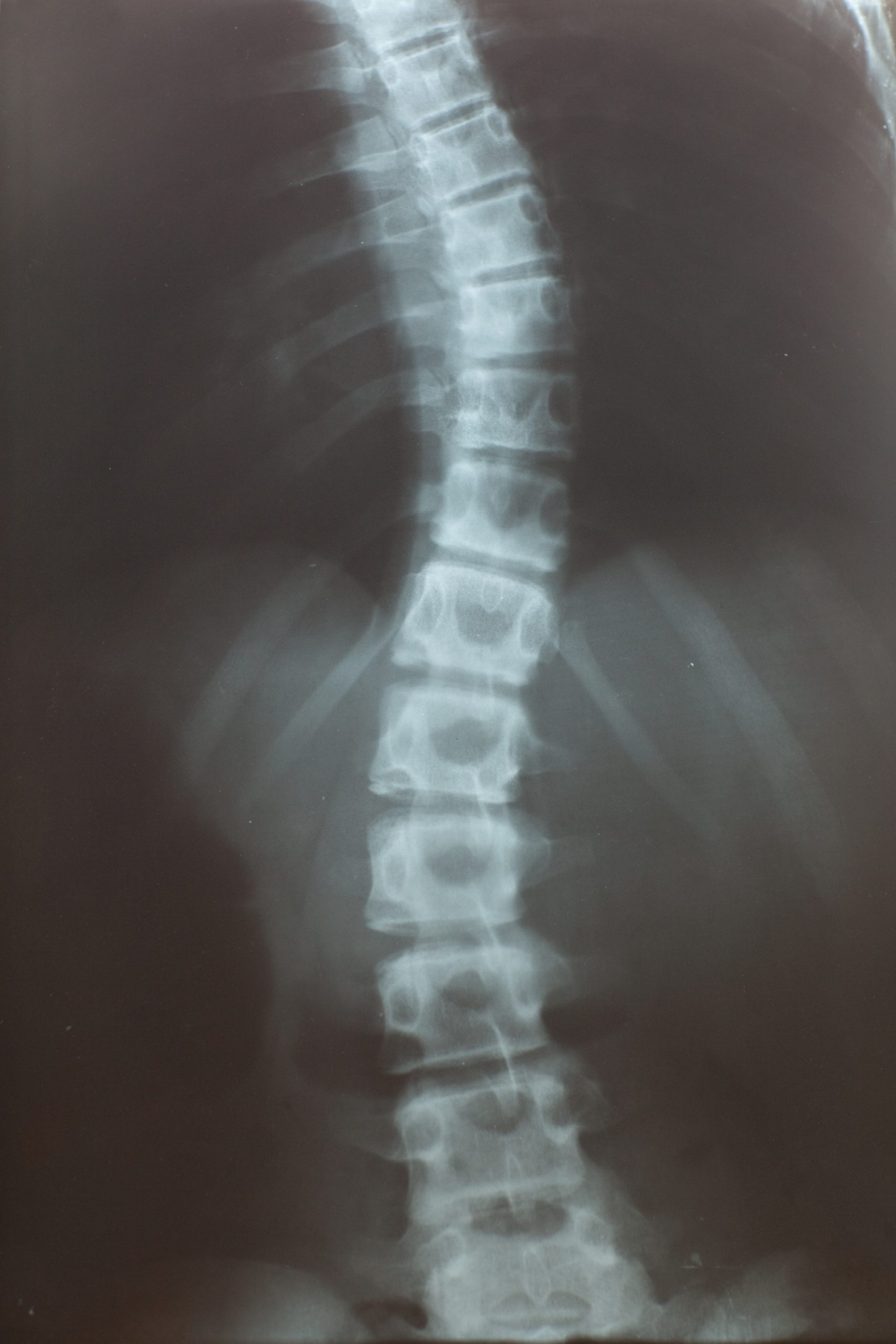
Scoliosis

What is Scoliosis?
Scoliosis is a progressive lateral curvature of the spine. When viewed from the side, the spine has natural curves, whereas when viewed from the front, the spine should be straight.
Scoliosis can refer to a C-shaped curve, or an S-shaped curve.
Scoliosis usually develops during the pre-puberty growth spurt, around the age of 10 -12 in girls and 12 -14 in boys.
The most commonly found type of scoliosis is “”idiopathic scoliosis”, meaning the cause is unknown. Research into the cause of scoliosis suggests that there is a genetic factor which affects the control of the growth of the spine.

Although scoliosis can affect both children and adults, it can be a more serious condition in children because it can progress rapidly as the child grows. Scoliosis is usually first seen in children between the ages of 10 and 15. However, it can occur in younger children aged 3 to 10 years (juvenile scoliosis) and even in babies (infantile scoliosis). Scoliosis can also occur in adults with no previous history, due to spinal degeneration with advancing age.
Symptoms of Scoliosis
The symptoms and effects of scoliosis include poor posture, protruding shoulder blade on one side, spinal muscle weakness, and back and neck discomfort due to the twisting of the spine. Severe cases of scoliosis can lead to heart and lung problems due to crowding in the chest cavity. Milder cases of scoliosis may have no symptoms.
Treatment of Scoliosis
If scoliosis is detected and treated early, progression of the curvature can often be reduced and the worst effects avoided. More severe scoliosis requires the wearing of customised body braces or surgery.
Conservative scoliosis treatments have the best result when the condition is detected early and treated with appropriate and proven methods.
• Specific chiropractic adjustments, designed to maintain proper movement in the spinal joints and reduce the torsion in the spine;
• Use of foot orthotics and heel lifts to level the pelvis;
• Core strengthening exercises to address balance, co-ordination and alignment, as well as specific stretches to maintain spinal flexibility;
• Nutritional support.
Chiropractic care for scoliosis can help maintain the condition of the spine, especially when started in the early stages. The treatment program has the potential to prevent the need for more drastic intervention later on.
For scoliosis screening and other diagnostic tests and treatment, contact us at Blue Vista Health Centre. Our service area includes Bullaburra, Wentworth Falls, Lawson, Leura, Katoomba, Hazelbrook and the greater Blue Mountains.
For more information also visit the Scoliosis Australia website